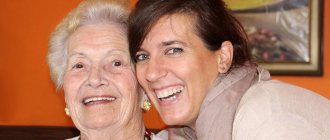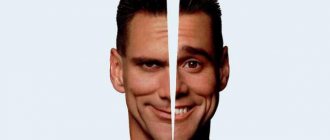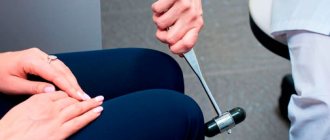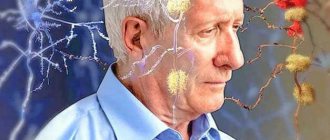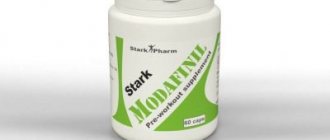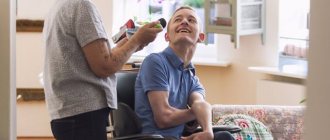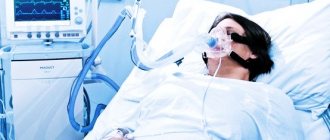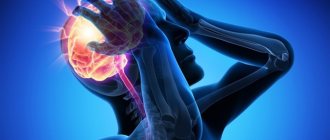Motor neurons, upper and lower
Amyotrophic lateral sclerosis (ALS) is the most common type of motor neuron disease.
Motor neurons are cells that carry information from the central nervous system to the muscles. They can reach 1 meter in length.
Upper motor neurons are located in the cerebral cortex. Their processes (axons) descend into the spinal cord, where they contact the neurons of the spinal cord.
Neurons in the spinal cord (lower motor neurons) use processes to transmit signals to the muscles and control their contractions. Depending on their location, they are responsible for the movement of the arms, legs, torso, contraction of the diaphragm, breathing, swallowing, etc.
In ALS, motor neurons in both the brain and spinal cord are affected and killed.
The average age of patients is 45 years, but there are also much younger patients. Thus, American composer and guitarist Jason Becker was diagnosed with ALS at the age of 20.
The disease occurs in 5-7 people per 100 thousand population. Every 90 minutes, a new case of ALS is diagnosed around the world.
There are twice as many cases of men as women.
Amyotrophic lateral sclerosis (ALS) - what is it and how to help people? (video)
Dear friends! Today on my channel a very serious topic is being raised - helping patients with amyotrophic lateral sclerosis (ALS). Gleb Nikolaevich Levitsky, director of the Nina Ivanovna Levitskaya Charitable Foundation for Helping Patients with Amyotrophic Lateral Sclerosis, neurologist, chief physician of the Gleb Levitsky Clinic, talks about this disease, what patients with ALS need, what are the methods of diagnosis, treatment, and care for patients with ALS. with a private center of amyotrophic lateral sclerosis.
Details for transferring donations to the Fund: Charitable Fund for ALS Patients named after N.I. Levitskaya INN 7716237980 KPP 770101001 OGRN 1067799028241 Branch No. 7701 of VTB Bank (PJSC) Moscow BIC 044525745 r/s 4070381090000 0004503 k/s 30101810345250000745
The problem of amyotrophic lateral sclerosis is acute in the Russian Federation. Despite new scientific advances, all treatment methods can only slow down the progression of this fatal disease, which gradually causes atrophy of all muscles, loss of self-care, speech, swallowing, and breathing problems. Many patients give up, but many want to prolong life in a relatively stable quality, but this requires funds that sometimes exceed the capabilities of the patients.
In 2006, the Nina Ivanovna Levitskaya Charitable Foundation for helping patients with amyotrophic lateral sclerosis was opened - this is the first foundation in Russia on this topic. The foundation provided expensive assistance in the form of non-invasive and artificial ventilation devices, medications, and care products to dozens of families of ALS patients. However, the capabilities of our sponsors are limited; the work of the Foundation requires donations from people who are concerned about the problems of ALS patients.
Over the 12 years of work, the Foundation's employees have tried to increase awareness of the problem of ALS in Russia. We conducted certification cycles for neurologists, gave interviews to newspapers, magazines, and on television, and made a documentary about ALS. The foundation carries out educational activities by distributing books by the director of the foundation, candidate of medical sciences Gleb Nikolaevich Levitsky, for patients and doctors, published in 2010, 2011 and 2021. Quite a few scientific articles have been published in Russian and foreign periodicals on the problem of ALS. Gleb Nikolaevich Levitsky has been dealing with the problem of ALS for 20 years. Consultations are carried out at the level of the international standard of care for patients with ALS, in particular we have experience with the drug Rilutek, as well as drugs such as Edaravone and Masitinib, since their appearance on the market. These drugs help many patients, but since they are not registered in the Russian Federation, patients are forced to buy them themselves, and the high cost of the drugs limits patients from doing this. Donations from caring people are needed. Non-invasive ventilation devices are expensive and patients often need help purchasing them. An important component of helping patients and relatives is the work of a psychiatrist and psychotherapist. The Crisis Department of the Yeramishantsev City Clinical Hospital in Moscow and psychiatrist Andrei Sergeevich Levitsky cooperate with us. Surgical treatment of patients with ALS (tracheostomy, gastrostomy) is carried out at City Clinical Hospital No. 31 in Moscow. And here we need help to purchase gastrostomy tubes, enteral nutrition, and pay for the work of specialists.
For a long time, the FUND used the help of individual sponsors of the Foundation and friends of the Director of the Foundation, Gleb Levitsky, but currently, to update the equipment fleet and targeted assistance, more donations from a wider audience are needed.
Website of the Nina Ivanovna Levitskaya Charitable Foundation for helping patients with amyotrophic lateral sclerosis: https://www.alsportal.ru
Website of the Gleb Levitsky Clinic with a private center for amyotrophic lateral sclerosis (Clinical and diagnostic): https://r-health.ru
* The present tense performs the function of a foreign agent. We put this mark at the request of the Ministry of Justice and Roskomnadzor. We do not agree with laws requiring this labeling.
Famous people with ALS
Mao Zedong.
Photo from pinterest.ru Mao Zedong (1893-1976) - Chinese politician. At the age of 80, he was diagnosed with ALS, but died two years later from a heart attack.
Lou Gehrig (1903-1941) was an outstanding American baseball player. He was diagnosed with ALS at age 36, in 1939.
Dmitry Shostakovich (1906-1975) is a great composer. He suffered from ALS for about ten years and died of a heart attack.
Stephen Hawking (1942-2018) is a famous British physicist. Lived with ALS for over 50 years.
Vladimir Migulya (1945-1996) – composer, author of music for the songs “Grass at the House”, “Talk to Me, Mom”, “Stuntmen”, etc. The disease was discovered in 1993.
Jason Becker (born 1969) is an American composer and guitar virtuoso. He fell ill with ALS at the age of 20, in 1989.
Fernando Ricksen (born 1976) is a Dutch footballer. He was diagnosed with ALS in 2013 and lost the ability to speak in 2021.
Who's at risk
Stephen Hawking.
Photo from pinterest.ru The disease was first described in 1869 by the Frenchman Jean-Martin Charcot, but it is still poorly understood. In each case, its triggering mechanisms may be different.
There are hereditary forms of ALS, and then the main cause is a mutation in a specific gene. When making a diagnosis, a neurologist usually asks whether any other family members have suffered from amyotrophic lateral sclerosis or frontotemporal dementia (the same genetic “breakage” leads to it).
But in the vast majority of patients (90-95%), none of the relatives suffered from these diseases. Moreover, in 10% of these people the mutation is still detected - it occurs for the first time in them, and is not transmitted from their parents.
There is a hypothesis that there is a connection between the non-hereditary form of ALS and certain injuries, high stress in sports, and agricultural chemicals.
But clear conclusions have not yet been made, since many data are inconsistent with each other.
The only known risk group is children of sick parents with an established mutation that caused the development of ALS. They inherit the damaged gene with a 50% probability. But a gene mutation does not necessarily lead to ALS.
Weakness in the legs
Dmitry Shostakovich.
Photo from pinterest.ru ALS is very difficult to diagnose. Firstly, because it is a rare disease that doctors are poorly aware of. Secondly, early symptoms are quite minor: clumsiness, clumsiness in the hands, slightly slurred speech. Thirdly, the disease manifests itself differently in each patient.
The first and most common symptoms of ALS are weakness in the arms or legs. Objects begin to fall out of the hands, the person stumbles when walking, and drags his foot. There is a sensation of muscle contractions under the skin (fasciculations). Painful cramps and spasms may occur. Fatigue increases.
Difficulties begin with speech, swallowing, and chewing. It becomes difficult to breathe.
Some ALS patients may cry or laugh involuntarily. The reasons for this are not psychological, but physiological: the disease affects areas responsible for emotional reactions. Sometimes there are problems with memory and concentration.
Course of the disease
The disease is progressive. Muscle weakness increases and spreads to different regions of the muscles of the limbs, trunk, bulbar and respiratory muscles. One of the most vulnerable forms is bulbar (patients suffer from speech impairment). People note that it has become more difficult for them to sing, they cannot sing notes, and they pronounce words poorly. Someone notices that speech has become slower, its sonority has changed, and a nasal tone has appeared. The bulbar form is dangerous because in addition to changes in speech, swallowing disorders quickly occur. In this situation, in order to ensure normal nutrition for the patient and prevent aspiration (entry into the respiratory tract when inhaling liquid or solid substances), it is necessary to carefully select the diet.
What tests are performed to make a diagnosis?
Photo: Flickr.com/ec-jpr
If the therapist suspects that a person has amyotrophic lateral sclerosis, he will send him to a neurologist, who will prescribe a series of examinations:
– a blood test (will show whether the level of creatine kinase, an enzyme that is produced when muscle tissue is destroyed), is elevated;
– magnetic resonance imaging (does not reveal specific changes in ALS, is used to exclude diseases with symptoms similar to ALS);
– electroneuromyography (registration of electrical activity of muscles);
If necessary, additional examinations such as a lumbar puncture or muscle biopsy may be performed.
What happens to the patient
Photo from the site syl.ru
The average life expectancy for ALS is from two to five years from the moment the first symptoms appear. There are cases when the disease lasts several decades. For example, Stephen Hawking lived with ALS for more than 50 years. And there are patients who leave a few months after the diagnosis is made.
As ALS progresses, a person experiences increasingly serious difficulties with moving, speaking, swallowing, and breathing. Therefore, doctors advise relatives to immediately adapt housing for the patient and buy special equipment.
If the disease begins in the legs, then at first it becomes difficult for the patient to walk and maintain balance; he may lean on pieces of furniture, so they must be stable. Then the patient begins to use a walker or wheelchair, and it is important to free up space in the house for this.
Gradually, it becomes difficult for a person to raise his arms, so it is recommended to place all necessary things no higher than 1 m from the floor. There are adapted forks, spoons and knives with thicker handles and even with straps; they allow the patient to go longer without assistance when eating.
To communicate with the outside world, such patients eventually have to resort to special devices. Stephen Hawking, for example, used a special computer system that was controlled by the cheek muscle. And Jason Becker uses a board with letters that he points to with his eyes. Many people benefit from the Tobii device, which connects to a regular computer and allows you to move the cursor and type on the keyboard with your eyes.
Sooner or later, a person's respiratory muscles are affected and he loses the ability to breathe on his own. Then there is a need for breathing equipment.
Improving the quality of life of patients with amyotrophic lateral sclerosis
Breathing support
In patients suffering from ALS, all muscles, including the diaphragm, atrophy in the later stages of the disease. The amplitude of respiratory movements decreases, less oxygen enters the lungs, and the removal of carbon dioxide from the body also slows down. Because of this, oxygen deficiency progresses, shortness of breath increases, and sleep worsens. In this condition, a person requires non-invasive ventilation. Early respiratory support can prolong the patient’s life by up to a year.
Solving eating problems
In addition to impaired respiratory function, people susceptible to this disease weaken over time the muscles of the jaw and larynx, which makes it impossible to eat properly. In such cases, it is important to ensure an adequate supply of nutrients and vitamins. The usual diet is replaced by something convenient for swallowing (porridge, mashed potatoes), and eating large pieces is avoided. Sometimes a nasogastric tube is used - a special device that allows specialized nutrition to be delivered through a tube directly into the stomach.
Combating Excessive Salivation
Another problem due to difficulty swallowing is saliva accumulating in the mouth. There are a number of methods that can alleviate the patient’s condition: from taking special medications that reduce salivation to inhalation and saliva ejection.
Fasciculations and muscle hypertonicity, limb cramps
To reduce spasticity, twitching and muscle spasms, doctors, taking into account the patient’s condition and contraindications, prescribe special medications that relax the muscles. The main side effect of such drugs is general weakness in the body.
Emotional instability
In some cases, patients with ALS exhibit disturbances in higher mental functions. For example, this is expressed by uncontrollable laughter or crying. In such cases, the patient requires an antidepressant, a prescription for which can only be written by a doctor.
What helps with ALS
Photo from als-info.ru
ALS remains an incurable disease. Doctors can only prolong a patient’s life and improve its quality.
Riluzole is a medicine that can slightly slow down the progression of ALS (provided the person starts taking it in the early stages of the disease). This drug is not registered in Russia.
Mechanical ventilation also increases the life expectancy of people with ALS. In addition, it improves sleep, reduces shortness of breath and fatigue. There is non-invasive pulmonary ventilation (NIV), in which a special device pumps air into a face mask. Invasive ventilation uses a tracheostomy, which almost completely deprives a person of the ability to speak.
Many people with ALS find it very difficult to eat and drink. To compensate for the lack of calories and fluid, special therapeutic nutrition is used. When it becomes difficult for a person to swallow even homogeneous food, a gastrostomy is placed - a special tube through which food enters directly into the stomach.
A neurologist may prescribe medications to the patient to reduce muscle spasms, as well as medications to reduce fasciculations. Morphine-containing drugs are prescribed to reduce the feeling of suffocation. Sometimes patients with ALS are given antidepressants.
Massage, aromatherapy, and acupuncture help relieve stress and pain. (Naturally, these methods do not treat the disease itself). Physical exercise allows you to maintain muscle function, a sense of balance, and joint mobility longer. However, excessive stress can cause harm, so a set of exercises should be developed under the supervision of a physical therapist or exercise therapy doctor.
Medicines are not for everyone
Although there is no cure for ALS yet, there are drugs that can make life easier for patients. Only here there is one important “but”: the drugs have the greatest effect in the early stages of the development of the disease. That is, the longer a person is sick and not treated, the more difficult it will be for him to maintain his condition in the future. The main drugs indicated for patients with ALS in our country and abroad are Riluzole and Edaravone. Both, however, are not registered in Russia. Lev Brylev, a neurologist and medical director of the Live Now Foundation, spoke about them at the conference
“The effectiveness of Riluzole is very well proven; studies have been conducted on a very large number of people. There is an effect from this drug, but, unfortunately, it is small. Many experts have questions about Edaravone’s effectiveness, because the study of this drug involved a rather limited number of patients with certain characteristics, moreover, many of them took Riluzole at the same time as Edaravone. However, the duration of treatment was only 24 weeks. I can immediately say that we do not have studies on longer-term use of this drug and data on what effect it will have after a year, two or three from the start of use,” Brylev emphasized.
Lev Brylev. Photo: Irina Fomochkina/MIR MTRK
What research is being done to beat ALS?
Image from the site syl.ru
In motor neurons affected by ALS, pathological clots (aggregates) of protein molecules are found. Typically, proteins stick together as a result of some defect in the gene that encodes them.
In 20% of cases of hereditary and in 2% of sporadic forms of ALS, the disease is caused by a mutation of the SOD-1 gene. This mutation was first discovered in 1993.
A mutation in the TAR DNA binding protein (TDP-43) gene has been found in some families of ALS patients. In 3-5% of patients with a hereditary form of ALS and in 1% with a sporadic form of ALS, a mutation of the FUS protein gene occurs.
In 2011, scientists discovered the C9ORF72 gene mutation. It turned out that it is present in 25−40% of families where there is a patient with ALS, and in 7−10% of patients with a sporadic form of the disease.
In 2014, thanks to the IceBucketChallenge flash mob, when thousands of people around the world were doused with ice water, more than $100 million was raised to research the causes of ALS and find a cure for this disease.
Research is going in two directions. The first is the search for genes that cause the hereditary form of the disease. The second is the identification of “susceptibility genes” that increase the risk of the disease in a family where no one has previously had ALS. Understanding the mechanisms of the disease will help find a cure for it in the future.
Physical therapy for ALS: what is the difference from exercise therapy?
Photo: Polina Geraskina / Live Now Charitable Foundation
Physical therapy is a relatively new and still unpopular specialty in Russia. It is often confused with physiotherapy, which now causes a lot of skepticism among supporters of evidence-based medicine. At first acquaintance, physical therapy may be equated with exercise therapy, but this is also incorrect. Timur Ivanov, a neurologist and physical therapist at the Live Now Foundation and the April rehabilitation clinic, talks in more detail about the tasks and possibilities of physical therapy in a material prepared for the About Palliative portal.
Attitudes towards physical therapy have changed over time. For example, in the mid-20th century, it was contraindicated for people with ALS and many other neurological diagnoses. Now these views have been revised, there is a lot of research into the effectiveness of physical therapy. Physical therapy techniques are being actively introduced in the world to support patients with ALS.
Not just exercises, but movement towards the goal
The main difference between exercise therapy and physical therapy is that in physical therapy, the work begins with setting an individual, achievable goal that will have a real impact on the patient's life. At the Live Now Foundation, we try to use an approach based on the international classification of functioning - it comes closest to fulfilling the tasks that we set for patients. This is a fundamental difference between our technique and classical exercise therapy.
Often a patient comes to me who has already been to an appointment with a physical therapy doctor, but he does not understand why these exercises were prescribed to him. Because of this misunderstanding, he is not motivated to study and does not see the meaning and purpose.
For example, a person’s arms and legs become weak. He doesn't understand why he was told to bend his fingers. Based on the classification of functioning, we analyze the problem and understand that due to weakness in the hands, a person cannot eat. We help a person choose an orthosis, a special spoon, and adjust his movements so that all this, together with exercises, will help him raise his arm and eat independently. This greatly motivates the patient to exercise.
Steve Soling, an architect and engineer, has ALS but continues to work using automation. The inscription on the back of the chair: “ALS took away my voice, but not my intelligence.” Photo: statnews.com
A person will exercise more actively if there is a specific goal: for example, if you explain to him that with the help of exercises he will be able to walk to the bathroom himself. Because this result is very important for him. This is the fundamental difference between physical therapy and classical exercise therapy. We don’t do exercises that a person doesn’t need—we set a goal.
Physical therapy at different stages of ALS
At different stages of the disease, goals will vary greatly. In this case, physical therapists use a division into the stages of ALS that is different from the classification adopted by neurologists.
The first stage, early: the patient has just been diagnosed. He does not experience any difficulties in everyday life - he fulfills his household obligations and goes to work. That is, he leads a normal life, but understands that he has become weaker. It is possible that your gait has become unsteady and it has become difficult to do normal things.
At the second stage, more pronounced disturbances appear. A person experiences difficulties in everyday life. It is difficult for him to climb stairs or make the bed, take a bath on his own, get in or out of it. It is at this stage that the main work of the physical therapist occurs.
The third stage is the stage when a large burden falls on the relatives of the patient, who is mostly immobilized. The physical therapist teaches the prevention of secondary complications: contractures, pain syndromes. We teach relatives how to properly move the patient so that he is comfortable, and at the same time, so that the relative does not harm himself. It is very important to warn and stop in time. For example, when a patient stands unsteadily, it is not uncommon for both the patient and the caregiver to fall.
By the way, preventing falls is one of the most important areas of work for a physical therapist in ALS. 11% of patients die from head injuries due to a fall. A person must understand that if he falls and has a fracture, this greatly accelerates the progression of ALS.
At the same time, the risk of falls has another side to the problem - early wheelchair syndrome. This applies to patients who are placed in a wheelchair prematurely, despite the fact that they are still quite active and can move and care for themselves independently. But in order to cope with rapid fatigue or to avoid falls, a person chooses not to get up at all. And this has a bad impact on his quality of life.
Do's and Don'ts for ALS
Rule #1: Don't overwork yourself
As a rule, patients, upon learning of their diagnosis, are at first confused. Someone - usually young men - begins to actively exercise in the hope that the overload will help stop the disease. This sometimes leads to sad consequences: a person gets injured, stops exercising, and goes into deep depression.
On the contrary, there is a second group of patients - these are people who are very afraid to exercise. They may have heard from their neurologist that “you shouldn’t overexert yourself,” and as a result, they basically just sit in a chair and do nothing.
In principle, at the early stage of the disease there are almost no restrictions on physical activity. They can be the same as before the illness - you just need to listen to yourself a little more carefully and not let them get tired. The only thing we ask you to exclude is those exercises and sports that can lead to injury. Football, hockey, jumping, some aggressive sports - of course, we ask the patient to give them up. And if he was previously engaged in physical exercises, and he succeeds in them, then he needs to continue doing them.
Rule No. 2: set short-term goals and choose the best way to achieve them
This is especially true at the second stage, when a person begins to experience difficulties in specific actions that are familiar to him. For example, he cannot get into the bathtub. He has already stumbled once, and now he is scared. We work on coordination, balance, balance; if necessary, we select a walker or cane and test it. All this is necessary so that for some time, for example, a month, the patient still retains the usual skill and does not lose it prematurely.
Exercises with an elastic band. Photo: Charitable Foundation “Live Now”
At the second stage of the disease, you need to carefully monitor which exercises you need to do and which ones to exclude. Additional rehabilitation aids—canes, rollators, orthoses, cervical collars—can make the path to achieving a short-term goal much easier. A properly selected rehabilitation tool will help a person to be as active as possible.
Rule No. 3: Find the best way to cope with pain
A good example is shoulder pain. Often muscle atrophy leads to limitation of movement in the shoulder girdle: the muscles surrounding the shoulder joint are stretched. As a result, the biomechanics of movement are disrupted, and it is painful for the patient to raise his arm. He stops using it - although in fact the hand can still work. Special exercises to stabilize the shoulder joint or a supportive brace return the person to a working arm, and this is very inspiring for him. And most importantly, this gives him the opportunity to independently cope with many tasks in everyday life.
We must remember that if there is characteristic pain in the shoulder, you should not pull the patient’s arm to lift it. Due to muscle weakness, this can easily lead to dislocation. This is one of the reasons why we recommend avoiding free weight exercises (such as dumbbells) in favor of an elastic band: it gives better joint control without jerking or overexertion.
Rule #4: Use a breathing machine
In our experience, after about a month of exercise on a breathing simulator, many patients’ vital capacity (VC) increases.
This is not related to the direct influence of exercise on the course of the disease, but due to regular training of the respiratory muscles, the vital capacity at first actively increases or begins to stabilize and does not decrease so quickly.
Rule #5: Exercise regularly
Sometimes we come across the fact that a person went to a sanatorium, worked with him for two weeks, and the person felt better. But then, until next year, he doesn’t do anything on his own. In this case, the effect of such activities is lost too quickly. In case of ALS, continuous rather than course maintenance rehabilitation with changing loads and correction of exercises is required. The patient should be observed from the earliest stage of the disease to the most advanced stage.
You need to exercise not only on an outpatient basis, but also at home. Many of our patients come from the regions - we give them tasks and teach their relatives safety precautions. They practice, send us videos of how they practice, and we try to correct it. If it works out, then later they come for a second consultation. However, it is important that classes are carried out under the supervision of a neurologist, in particular, to avoid complications due to concomitant pathologies, for example, cardiovascular diseases.
Today in Russia there is no official specialty “physical therapist”: it is not taught in universities, and you cannot get to such a specialist through compulsory medical insurance. However, interest in the specialty is growing among doctors themselves, who are ready to invest in their education, take advanced training courses abroad and apply the acquired knowledge and skills in our country.
Patients with ALS can learn more about how to make an appointment with a physical therapist at the medical and social service for people with ALS, which operates on the basis of the Live Now Foundation.
Prepared by Anna OVSYANNIKOVA
We would like to thank volunteer Anush Suleymanyan for his help in deciphering the material.
What help does the patient and his family need?
Photo by Yuri Mozolevsky from the website sb.by
A person with ALS may need consultations with a neurologist, a respiratory support specialist, a physical therapist, an occupational therapist, a nutritionist, a speech therapist, a music therapist, a psychologist, a palliative physician, as well as the help of a medical and visiting nurse.
The family will have to provide him with certain equipment. This could be a wheelchair, walker, multifunctional bed, ventilator or NIV, aspirator (saliva ejector), cougher, lift (for example, for moving from a bed to a wheelchair or from a stroller to a bath). In addition, the patient needs medicine, nutritional therapy, hygiene products, etc.
Each patient with ALS needs an individual route of care, as the disease can progress in different ways.
Support for people with ALS and their families
It is very important that people facing this disease feel support and care from others, and that their family and friends are nearby and know how to help during this difficult time. There are many different services and associations around the world to help people with ALS and their families. In Russia there are also several large associations whose purpose is to provide information, moral and spiritual assistance to sick people and their loved ones. Support services help organize treatment, find specialized equipment and medications. Specialists provide lessons for relatives and guardians on care, nutrition and communication. The latest news and research related to ALS are also published on official websites. Help services regularly hold educational events, awareness days and much more. All this is done so that sick people do not feel cut off from society, and their loved ones know where to get help.
